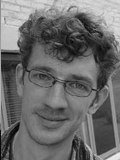GOTO is a vendor independent international software development conference with more that 90 top speaker and 1300 attendees. The conference cover topics such as .Net, Java, Open Source, Agile, Architecture and Design, Web, Cloud, New Languages and Processes
Kresten Krab Thorup, TweetHacker, CTO of Trifork, Member of Program Advisory Board

Biography: Kresten Krab Thorup
Kresten Krab Thorup is CTO of Trifork, a public Danish company providing software solutions to government and financial services providers. Trifork is also creator of the long-running GOTO conference (formerly known as JAOO), and co-creator of QCon. As Trifork CTO Kresten in responsible for technical strategy, and spends most of the time acting as internal consultant, researching future technologies, as well as being editor for GOTO and QCon conferences. Kresten has also been a principal contributor to Trifork's own Java EE certified application server "Trifork T4", where he authored many core elements.
Kresten has been a contributor to several open source projects, including GCC, GNU Objective-C, GNU Compiled Java, Emacs, and Apache Geronimo/Yoko. Before joining Trifork, Kresten worked at NeXT Software (now acquired by Apple), where he was responsible for the development of the Objective-C tool chain, the debugger, and the runtime system. Kresten was on the committee for JSR-14 (adding generics to Java) which was closely related to the subject of his Ph.D. thesis.
More recently, Kresten has been hacking Erlang projects, and founded the Erjang open source project (notice the J there), a virtual machine for Erlang running on the Java Virtual Machine, as well as several smaller open source packages for Erlang.
Kresten is member of GOTO Aarhus Program Advisory Board; he has a Ph.D. in computer science from University of Aarhus.
Presentation: TweetConference Opening & Introduction of Today's Tracks
The Program Committee and Thursday Track Hosts will present the program and provide a short introduction to the Tracks scheduled.
Presentation: TweetIntroduction of Fridays Tracks
Presentation: TweetWhat is a Reactive Application Part I
Reactive is becoming the new cool kid on the block when it comes to developing mission critical applications. What is the big deal? The old hands that were involved in the likes of Erlang and Tandem will say this is nothing new. Indeed that is very true. However many seem to have lost their way with enterprise applications and descended into the tar pit of big frameworks such as JEE, or built Rails apps that fall apart when they grow up into successful applications. Yet some large scale web companies, telco providers, financial trading firms, and multi-player online games are delivering services that are always available by being resilient to failures, always responsive so that users are not left waiting, and reactive to load by elastic use of resources. How do they offer this level of service? Well that is what we want to discuss.
In this deep dive we will explore what are considered the desirable characteristics of reactive applications via a series of lightening talks. Then we will discuss the design approaches that can be taken to achieve these desirable characteristics. The discussion will be open to the audience so everyone can explore this topic and learn.
Presentation: TweetWhat is a Reactive Application Part II
Reactive is becoming the new cool kid on the block when it comes to developing mission critical applications. What is the big deal? The old hands that were involved in the likes of Erlang and Tandem will say this is nothing new. Indeed that is very true. However many seem to have lost their way with enterprise applications and descended into the tar pit of big frameworks such as JEE, or built Rails apps that fall apart when they grow up into successful applications. Yet some large scale web companies, telco providers, financial trading firms, and multi-player online games are delivering services that are always available by being resilient to failures, always responsive so that users are not left waiting, and reactive to load by elastic use of resources. How do they offer this level of service? Well that is what we want to discuss.
In this deep dive we will explore what are considered the desirable characteristics of reactive applications via a series of lightening talks. Then we will discuss the design approaches that can be taken to achieve these desirable characteristics. The discussion will be open to the audience so everyone can explore this topic and learn.
